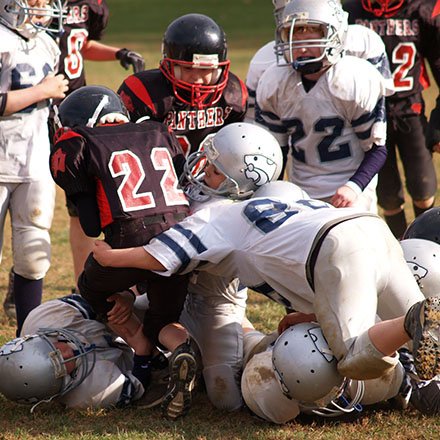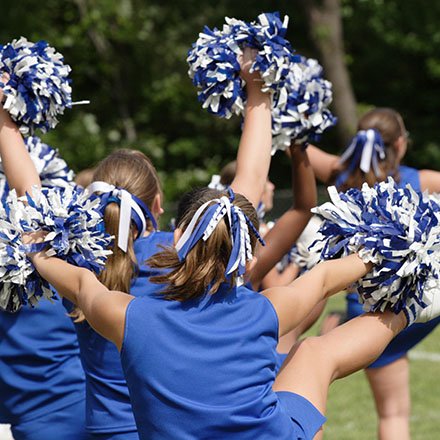Navigating Your Child’s Surgery: Options to Enhance Their Recovery and Minimize Opioid Exposure
By Roy Winston, Chief Medical Officer at Pacira BioSciences, Inc.
The U.S. is currently facing a devastating opioid epidemic, with the CDC noting a new record of 110,236 overdose deaths in a single 12-month period in 2022. Even further, median monthly overdose deaths among adolescents aged 10–19 years old increased a staggering 109% from 2019 to 2021.
Sports-related incidents cause almost one-third of childhood injuries. While there are ways to help prevent injuries, which you can find here, they are still common among youth athletes. Due to the prevalence of sports-related injuries and the potential for surgery, youth athletes have a higher exposure to prescription opioids, and opioid misuse is 50% higher in these patients than in those who don’t participate in sports.
With injury or surgery often being the first time many young people are exposed to opioids, adolescents can unfortunately become unintended victims of their potential dangers, such as the risk for addiction. Luckily, if an injury occurs that ends up leading to surgery, there are safe and effective non-opioid options available for children that can help reduce, or even eliminate, the need for a youth athlete to take opioids for their postsurgical pain.
Opioids Don’t Need to Be the Standard
Nearly 4 million pediatric surgeries are performed each year in the US. Unfortunately, opioids have often been the standard method for treating pain after surgery, even for children. Consequently, this vulnerable population is put at risk of experiencing the downstream consequences of opioids, such as dependence or addiction. In addition to the risk of misuse, opioids have a range of unwanted side effects, including nausea, confusion, constipation, and dizziness – all of which can slow recovery after surgery.
According to a study funded by the National Institute on Drug Abuse (NIDA), prescription drug misuse in adolescents ages 10-14 increased in 2020. For children specifically, studies have shown that opioids can be attributed to 50% of postsurgical respiratory failure events and may also hinder recovery, extend hospital stay, and negatively impact both patient and parent experience. Countless statistics like these point to the need for additional interventions to mitigate exposure to opioid medications, especially among our youth.
Pain Management Has Evolved, Know Your Child’s Options
Knowing this, many physicians have made it their mission to seek out and implement non-opioid options to manage patients’ pain. Modern medicine and innovations in pain management have prompted the availability of safe and effective non-opioid options that not only provide pain control after surgery but can also offer an enhanced recovery while minimizing or eliminating the need for opioids.
For instance, long-acting numbing medications have had a positive impact when used for pain management after a range of pediatric surgeries (orthopedic procedures, tonsillectomies, wisdom tooth removal, appendectomies, scoliosis-related surgeries, etc.). These medications, also known as long-acting local anesthetics, are injected during a procedure and numb the area around the surgical site for the first few days after surgery.
Other forms of non-opioid pain management include intravenous (IV) acetaminophen, non-steroidal anti-inflammatories (NSAIDs) such as naproxen or ibuprofen, local anesthetics, gabapentin, and others. When combined as part of a “multimodal” pain management plan, opioid use can be greatly reduced or even eliminated altogether.
The Benefits of Non-Opioids Speak for Themselves
94% of surgeons agree that non-opioids can positively impact recovery and the ability to return to normal function following surgery. Unlike opioids which affect the entire body, options like long-acting local anesthetics (or numbing medications) are targeted and impact only the surgical area where they are injected. Benefits that surgeons and their care teams have reported firsthand from using a non-opioid approach for their pediatric patients include:
- Consistent reports of well-managed pain after surgery
- A significant reduction in the amount of opioid pain medication patients take, leading to reduced overall opioid prescribing
- Pediatric patients are up and moving around sooner after surgery
- Parents report relief in not over-exposing their children to the risks of opioids
Have an Open Discussion with Your Child’s Doctor
Whether or not the procedure is related to a sports injury, if your child is heading in for surgery, be proactive in discussing their pain management plan. Advocating for the use of non-opioid options could mean the difference between a healthy, quick recovery and a recovery plagued by side effects or potential opioid dependence.
To help you with these discussions, we’ve created a downloadable discussion guide to review or even take with you to your child’s next doctor’s appointment. These questions can help both you and your child better understand how to ensure the best surgery and recovery possible.




